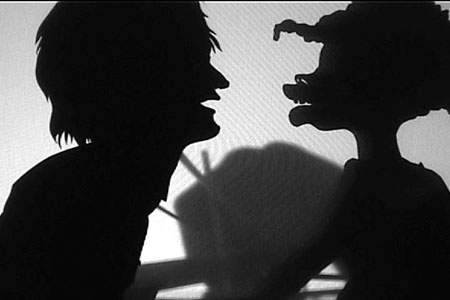
Testimony: Narrative of a Negress Burdened by Good Intentions 2004
This week I’ve really been digging on the work of Kara Walker. Here’s an overview from New York Times about Kara Walker‘s work.
Kara Walker speaks my artistic language. Her work is controversial and raw, and like all good art she drudges up images from the past that exploit racial history, and generates a dialogue that is relevant to our day and time. In her current art exhibition at the Whitney Museum, Kara challenges the notion that racism is dead.
I admire the boldness of Kara Walker’s work. For I can attest that it can be a struggle to be a black-female artist interested in dissecting and understanding race in a seemingly “post-racial” society (which in actuality does not exist). I don’t want to be seen as an angry, bitter, black woman who conjures up scarring images from the past just for the sake of complaining. The fact of the matter is that I am legitimately (and rightfully so) angry about my station in society, and the position of that station is rooted in a long history of racial tension that must be examined.
The reason controversial works like Kara Walker’s tend to be overlooked and categorized as “bitter black women” raging about racial issues, is because deeper questions are not being asked. When engaging in work that we don’t understand or that confuses us there’s a tendency to disregard it. We often make judgements about the work, rather than going through the process of asking more questions. Unfortunately not everyone who encounters a controversial work is open to asking questions, so as the dramaturg it falls upon us to create openings that help audiences engage with the work.
While pursuing Kara Walker’s website I came across a paragraph that addresses how audiences should approach her work, and questions that guide how her art should be critically analyzed.
It states….
“Controversial or difficult works of art are often criticized without accurate description. The act of describing slows the rush to judgment, deepens the engagement with the artwork, and gives space for emotions and questions to arise. A full description addresses the people, places, and events in the work; the material from which it is made; and how the artist addresses the subject matter through the medium. Description helps us form interpretations and judgments that are accurate and coherent.”
And leaves these questions for consideration, which are helpful to examining all works…
Questions for consideration:
When you look at this artwork, what do you notice?
Take about 5-10 minutes to name things seen in the artwork, without making judgments or expressing emotional reactions.
What do you notice about the artist’s use of color? Shapes and forms? Overall arrangements or installation?
Click Here to learn more about Kara Walker’s art.
Cloteal Horne
